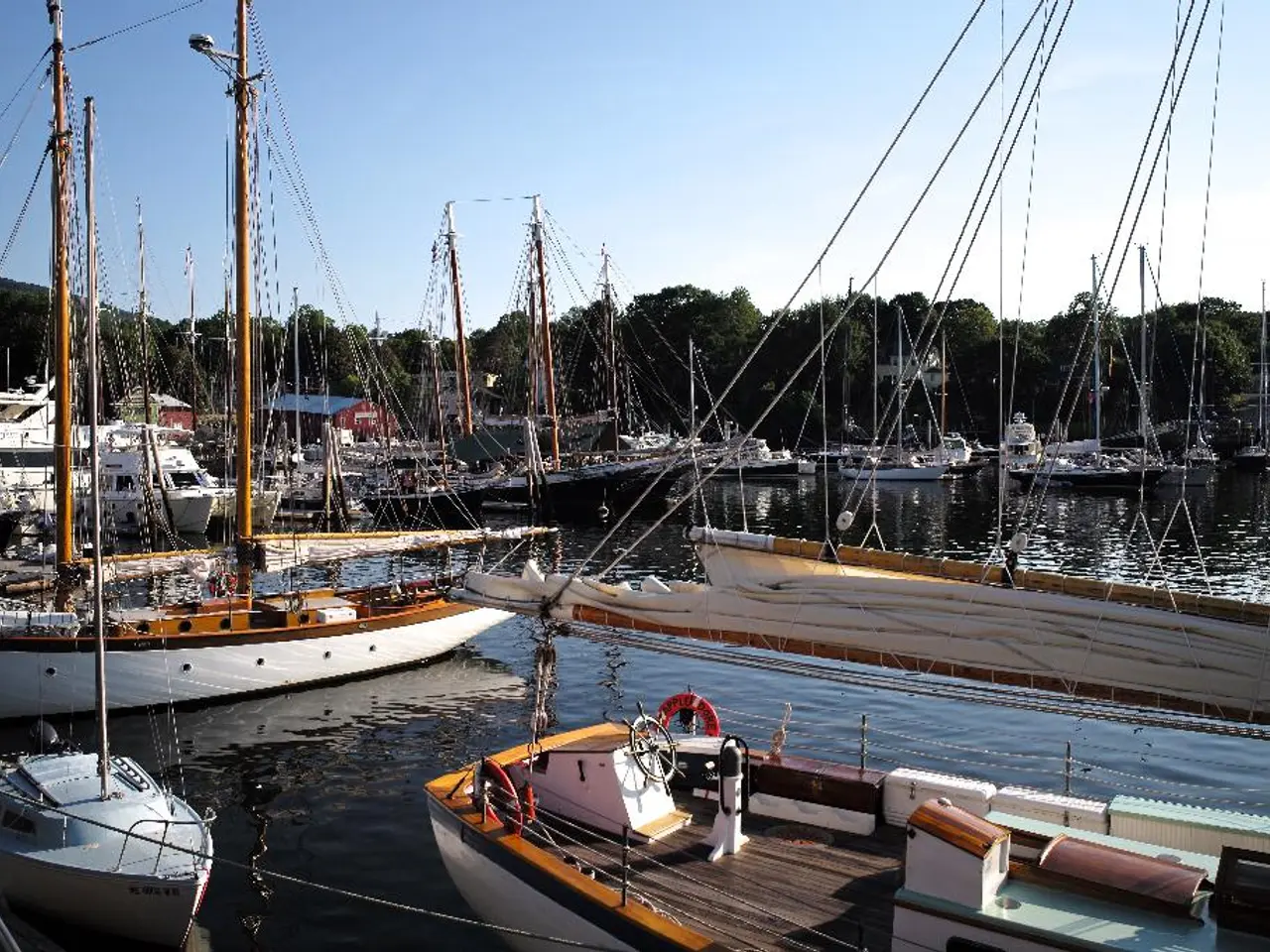Homemade Navigational Device Propels Vessel Through Water
In the world of sailing and boating, technology has made significant strides in enhancing navigation and situational awareness. One such solution that has gained popularity among sailors and DIY enthusiasts is the OpenCPN open source navigational platform running on Raspberry Pi.
Tom, a sailor, has chosen to equip his catamaran, SeaHorse, with a Raspberry Pi for navigation. This compact computer, housed in a waterproof box with a silicone gasket, serves as the core of his navigation system. The Pi under-clocks its CPU to reduce heat and save power, ensuring it remains functional even during prolonged periods when the boat is not connected to the grid.
Tom's navigation desk is a creative setup, using two old phones and a repurposed laptop screen to display weather forecasts, maps, GPS, depth, and speed over ground. For radio monitoring, he has added a software defined radio to the Raspberry Pi.
The navigation system on SeaHorse is tied together by OpenCPN, a platform commonly used in DIY smart sailing solutions. It supports raster and vector charts, route/waypoint management, and can interface with multiple sensors and vessels networks, making it a versatile platform for navigation and situational awareness.
OpenCPN integrates sensor data with open marine standards (e.g., Signal K) on the Raspberry Pi. It gathers wind, depth, speed data from legacy boat instruments via serial or USB, and augments it with modern devices like GPS pucks and ADS-B/ AIS receivers. The platform then aggregates and displays this data, providing route planning, real-time positioning, and environmental data visualization.
The Raspberry Pi often creates a Wi-Fi access point or connects to onboard Ethernet networks, allowing tablets, laptops, or smartphones to connect and view OpenCPN’s navigational data remotely. This supports multi-device wireless access to navigation charts and sensor readings, using mDNS (Bonjour/Avahi) for easy discovery without complex IP setup.
Moreover, OpenCPN on Raspberry Pi can be extended with plugins and configured for specialized failover sensor modes or multi-source data prioritization, enhancing reliability and redundancy on the vessel. DIY builders put the Raspberry Pi with OpenCPN in waterproof enclosures with custom cabling to interface with boat systems and external displays or input devices, creating a robust "nav desk" setup at significantly lower cost versus commercial marine electronics.
OpenCPN is also a potential platform for experimenting with reprogramming fishing net buoy transmitters. Tom is currently experimenting with reprogramming a buoy transmitter for boat location tracking, originally designed for tracking fishing nets.
Andrew Sheldon has contributed to the discussion of Tom's catamaran's navigation system. For those interested in nautical computing, an open source shipboard computer is available for additional nautical computing. This combination of open source software and hardware makes for a customizable, cost-effective marine navigation system.
- Tom, a sailor, has incorporated Arduino hardware into his navigational setup on SeaHorse, using it to augment and enhance his navigation system's functionality.
- The open source navigational platform, OpenCPN, running on a Raspberry Pi, supports not only vector and raster charts but also interfaces with various programming solutions like Arduino, making it a powerful tool for DIY sailors.
- Andrew Sheldon, a proponent of nautical computing, has suggested the use of an open source shipboard computer to further expand the capabilities of Tom's custom marine navigation system.
- In addition to the OpenCPN platform, Tom is also exploring the possibilities of open source programming to reprogram a fishing net buoy transmitter, using it for boat location tracking on his catamaran, SeaHorse.




